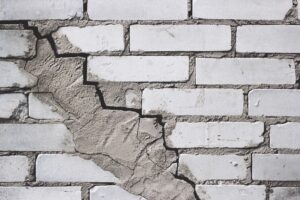Houses built in and around Edmonton before 1990 may have been insulated with Vermiculite, or “popcorn insulation”.
Vermiculite is a naturally occurring “mica-like” mineral that was mined and processed into attic insulation starting in the 1920’s and ending in the early 1990’s. When heated to around 1000 degrees C, it pops (or puffs up) which creates pockets of air. This expanded form, and the fact that vermiculite does not burn, made the material suitable for use as insulation.

Vermiculite itself is harmless. The problem is that the layers of igneous rock where it is found may contain asbestos, exposure to which has been definitively linked to several fatal lung diseases.
Vermiculite mined by the W.R. Grace Company at the Libby Montana mine and marketed under the brand name “Zonolite” has been shown to contain a type of asbestos fibre, commonly called Tremolite.
Not all vermiculite contains asbestos fibres, but the Libby mine supplied most of the world market in vermiculite-based insulation until it closed in 1990. This insulation was sold under the name Zonolite but may have been sold under other brand names and may contain a small percentage of free asbestos fibres.
To be safe, if your building has older vermiculite-based insulation, assume it may contain some asbestos.
The only way to identify asbestos is through microscopic examination of the material.
How Can the Risk Be Minimized?
According to the Health Canada advisory “Vermiculite Insulation Containing Amphibole Asbestos,” the best way to minimize your risk of asbestos exposure is to avoid disturbing vermiculite insulation. If vermiculite insulation is confined and not exposed to the actively used spaces of the building, it poses negligible risk.
If you know you have, or believe you may have, vermiculite-based insulation in your building, the following precautionary steps are recommended:
- Seal all cracks and holes in the ceilings of the rooms below the insulation (for example, apply caulking around light fixtures and access hatches with weather stripping seals) to prevent insulation sifting through.
- Restrict access to the space containing the insulation and make sure anyone going into the space knows about the possible presence of ‘ACM.’ Install warning signs just inside the affected area.
- Do not allow storage of any type in the space.
- If you must go into the space, use appropriate protective clothing and a respirator mask. Common dust masks are not effective protection against asbestos fibres. Half-face air-purifying respirators with P100 filters can be used and are available from retailers who sell safety equipment. A person should also wear disposable coveralls, gloves, and booties.
- Walk on boards to minimize disturbance of the insulation.
- Do not remain in the space any longer than is necessary.
It may not be easy to discern whether an attic has vermiculite insulation present due to energy retrofits when attics were retrofitted with “batt” or blanket insulation or loose cellulose over the existing vermiculite. Care should be taken whenever moving existing insulation.
If you want to undertake renovations, and suspect your older home contains Vermiculite.
There is no easy or safe way for a homeowner to dispose of asbestos contaminated materials. The best thing you can do is call Shield Foundation Repair today at 780 760 4900.
We have the tools, expertise, and experience to deal with asbestos removal issues in a safe manner to ensure you and your family are protected.





